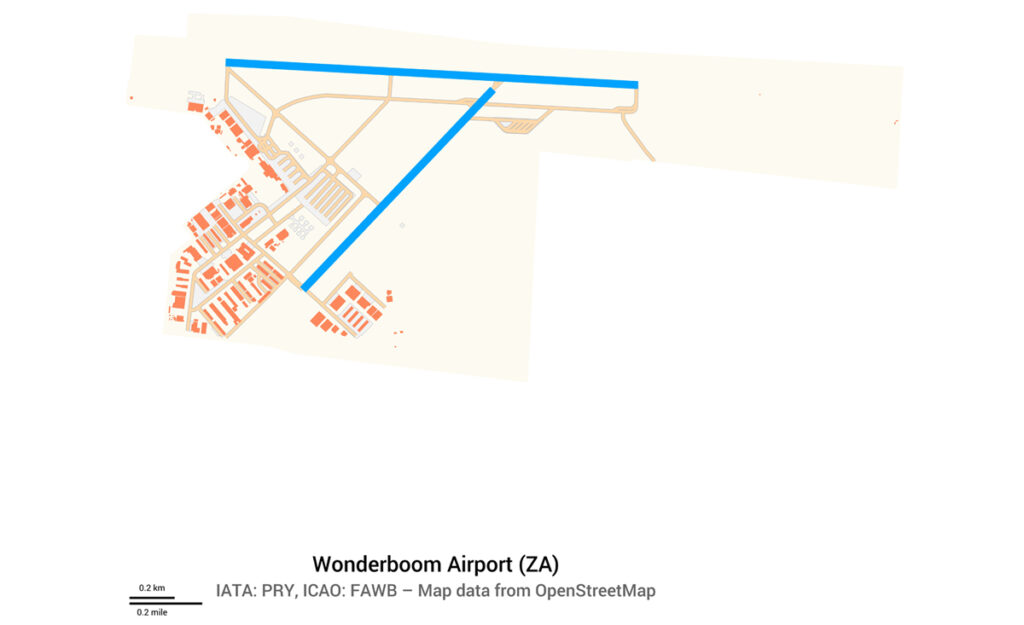
The Wonderboom Airport on the outskirts of Pretoria is set to be revived after years of being in a woeful state.
In her inaugural State of the City Address last week, Tshwane Mayor Nasiphi Moya said that rather than selling off assets that the metro has labelled as “white elephants”, her administration will commit to reviving them.
These include the aforementioned Wonderboom Airport which is no longer profitable, the decommissioned Pretoria West and Rooiwal power stations, and the Tshwane Events Centre, as per an EWN report.
Moya added that the City has been able to obtain the five-year licence for the Bon Accord Quarry which will allow it to produce its own hot asphalt.
The plant has been up and running for three months by now, supporting swift road repairs in the busy city.
“This doesn’t only indicate that we are able to build our own internal capacity on key services, but we are reducing the amount of money we are paying to service providers to do what the city can do,” said the mayor.
Wonderboom’s turnaround
The turnaround of Wonderboom Airport is not a new initiative, as it has been ongoing for quite a while.
Years ago the Tshwane government devised an 18-point plan to turn the aviation hub around, five of which have already been completed since October 2022.
The completed interventions include reclaiming the airport’s Category 5 licence, which was downgraded to Category 2 in 2019, and seeing a 64% growth in generated revenue between the 2020/21 financial year and the current fiscal period.
As a result, the net loss margins which once stood at -230% in the 2020/21 period have significantly improved to -69%.
What’s more, the upgrades come with no additional financial burden on residents or the metro’s overall budget.
Wonderboom management in partnership with Airports Company of South Africa (ACSA) have been able to achieve their objectives without the need for funding beyond the usual operating budget.

Despite the positive trend, Tshwane metro spokesperson Lindela Mashigo told Pretoria Rekord that the revival faces persistent challenges, particularly in the area of funding.
The metro is currently facing a financial crisis which limits the availability of resources it can allocate to the small airport.
Furthermore, he said resistance from current airport patrons remains an obstacle to the implementation of necessary changes.
“The metro envisions Wonderboom Airport as a driver of local economic growth,” said Mashigo.
“By improving the airport’s operations and expanding its services, the metro hopes to attract more air commerce, which will create a ripple effect that will benefit industries such as hospitality and logistics.”
Mashigo emphasised that Wonderboom has the potential to usurp 12% of the traffic of the country’s biggest airport, OR Tambo International, which handles over 26 million passengers annually.
In addition, it will create hundreds of employment opportunities for local residents once the upgraded airport is fully up and running.
Mashigo said the future of Wonderboom Airport revolves around three strategic pillars: arrest, stabilise, and grow.
The latter is focused on finalising the airport’s master plan, development plan, and precinct layout, which will guide its long-term growth and establish its role within the local and national air travel network.
Mashigo said these plans are expected to be concluded by December.
“The airport’s development will comply with international aviation standards set by the International Civil Aviation Organisation, ensuring that environmental sustainability is a priority,” he said.
“While the operational aspects of the strategy are set to be completed by the 2025/26 financial year, the full realisation of the airport’s potential will be a long-term commitment.”








